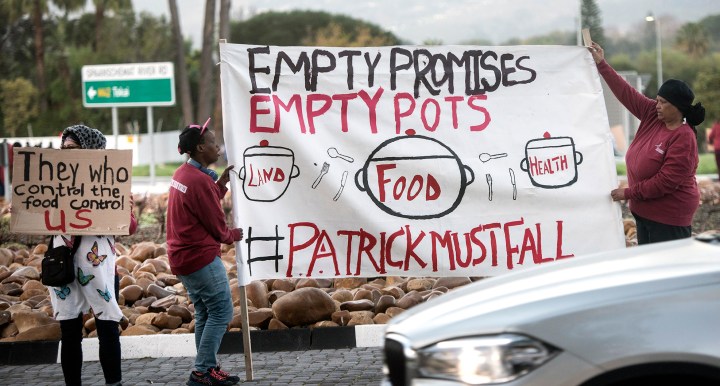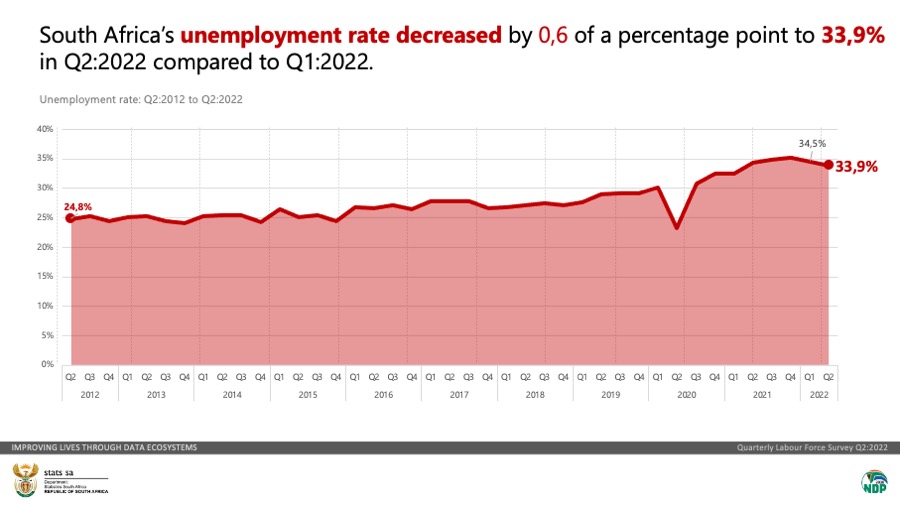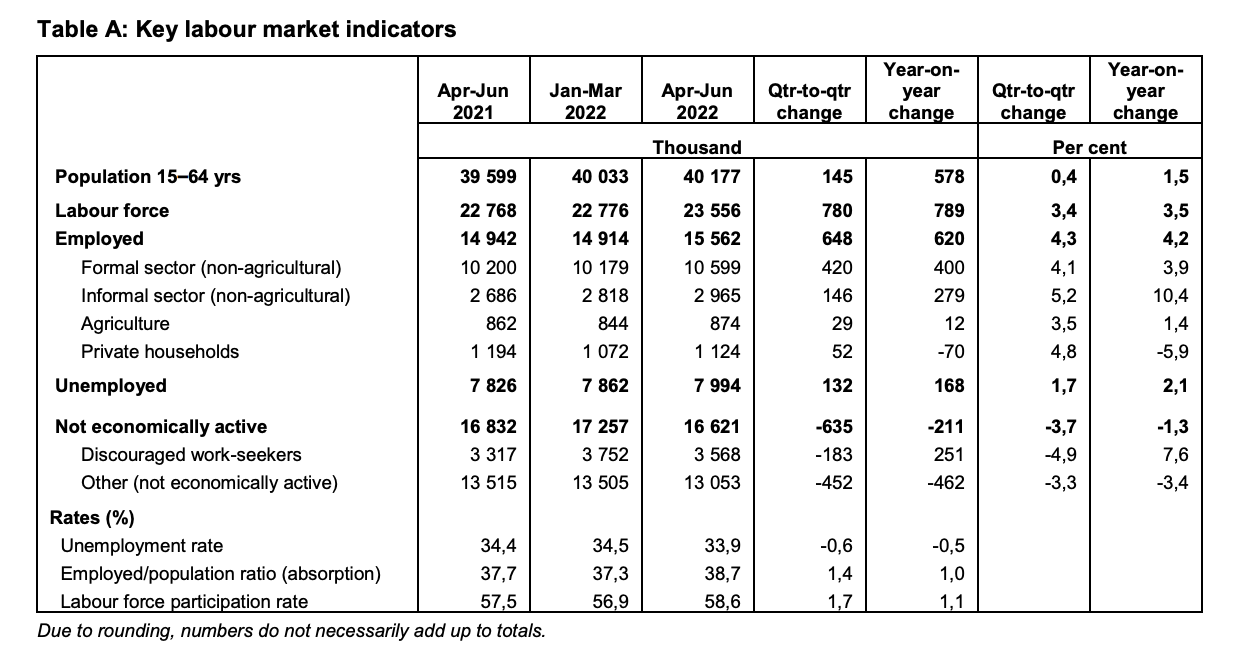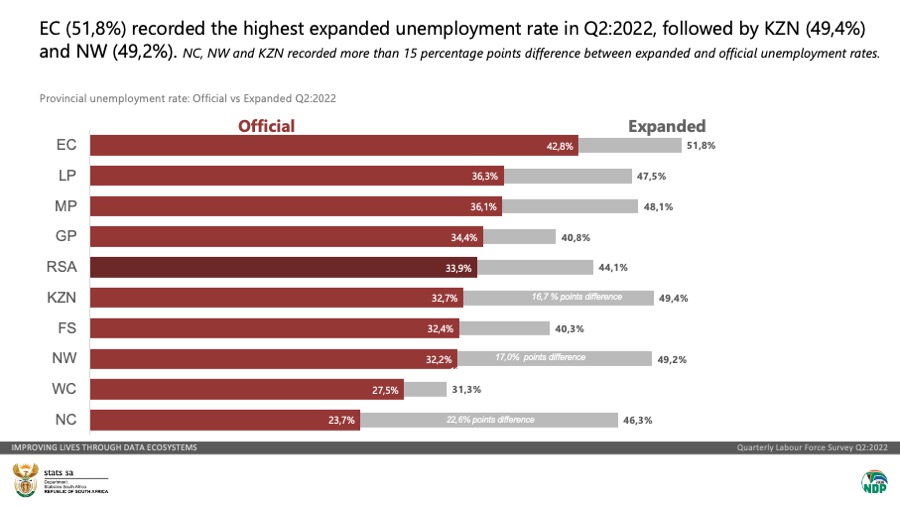Business Maverick
Jobless rate dips slightly in Q2, survey finds 47% of women are ‘economically inactive’

South Africa’s unemployment rate fell slightly in the second quarter to 33.9% from 34.5% in Q1. The best that can be said is that the number is at least going in the right direction. But the level remains at simply appalling levels, and the data show that 47% of South Africa’s women are economically inactive in a formal sense, exacerbating poverty and gender-based income disparities.
The figures, released on Tuesday by Statistics South Africa, are a bleak reminder ahead of Wednesday’s planned nationwide stayaway that millions of South Africans are in a perilous position to confront the surging cost of living. This point will not be lost on the union federations planning a nationwide stay away on Wednesday.
And women are bearing the brunt of this burden. The Quarterly Labour Force Survey (QLFS) found that 47.0% of South African women are considered to be economically inactive, at least in a formal sense.
“This means that almost half of the working-age women in South Africa are out of the labour force compared to 35,6% of their male counterparts. The latest global labour force participation rate for women is about 47% compared to 72% for men. The productive potential of South Africa women in the labour market remains unused,” Stats SA said.

“Over the period 2012 to 2022, the unemployment rate for women remained above the national average. In 2012, [it] was 3.7 percentage points higher than the rate for men, while in 2022 a gap of 2.9 percentage points was observed. The current unemployment rate for women is 35.5% compared to 32.6% for men,” it said.
So the gap has narrowed but remains high. This does not capture the productive contribution of women to unmeasured fields of the economy such as subsistence crop farming and other forms of informal work. But the picture that emerges is one of wide gender disparities that clearly magnify those of race.

The best that can be said about the overall number is that it is moving in the right direction, but such a high rate of joblessness still provides plenty of combustible material for social unrest. The South African economy is simply not creating jobs in a meaningful way to address the immense and enduring challenges of poverty and eye-popping inequality.
The unemployment rate according to the expanded definition of unemployment, which includes discouraged job seekers, fell 1.4 percentage points to 44.1% – still a shocker. Many South Africans have simply given up the ghost on the jobs front.
“Despite these positive decreases, at the end of the day, South Africa’s official unemployment rate remains the highest on a list of 82 countries monitored by Bloomberg. Strict labour laws, stagnant productivity, bureaucratic hurdles and a skills shortage have essentially reduced South African companies’ ability to hire additional workers,” Casey Delport, an investment analyst at Anchor Capital, remarked in a note on the data.

“The recovery in the unemployment rate may be short-lived as a record number of electricity outages forecast for this year, the ongoing devastating flooding in KwaZulu-Natal, a slowdown in global output, rising interest rates, and surging fuel and food prices caused by extreme weather and the war in Ukraine are likely to weigh on economic growth and job creation going forward,” Delport added.
It’s interesting to note that the unemployment rate fell in Q2 – the April-to-June period – a quarter in which the bulk of data suggests the economy is likely to have contracted. But Delport and other analysts have raised concerns about the reliability of South Africa’s unemployment data. And the long-term trend remains one of slow economic growth and high rates of joblessness. DM/BM




















 Become an Insider
Become an Insider
I wonder what the population growth was for the same period? More people = less jobs.